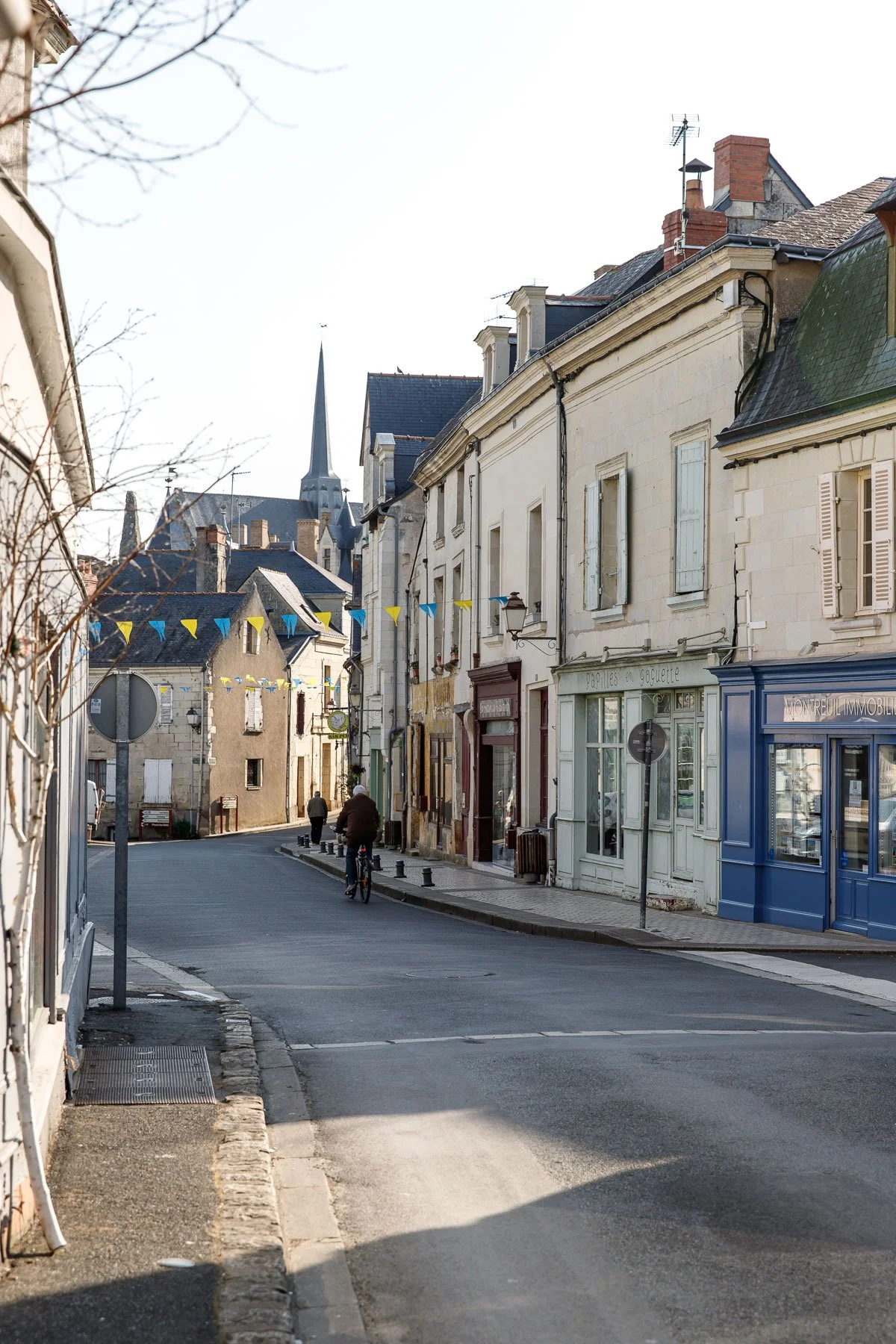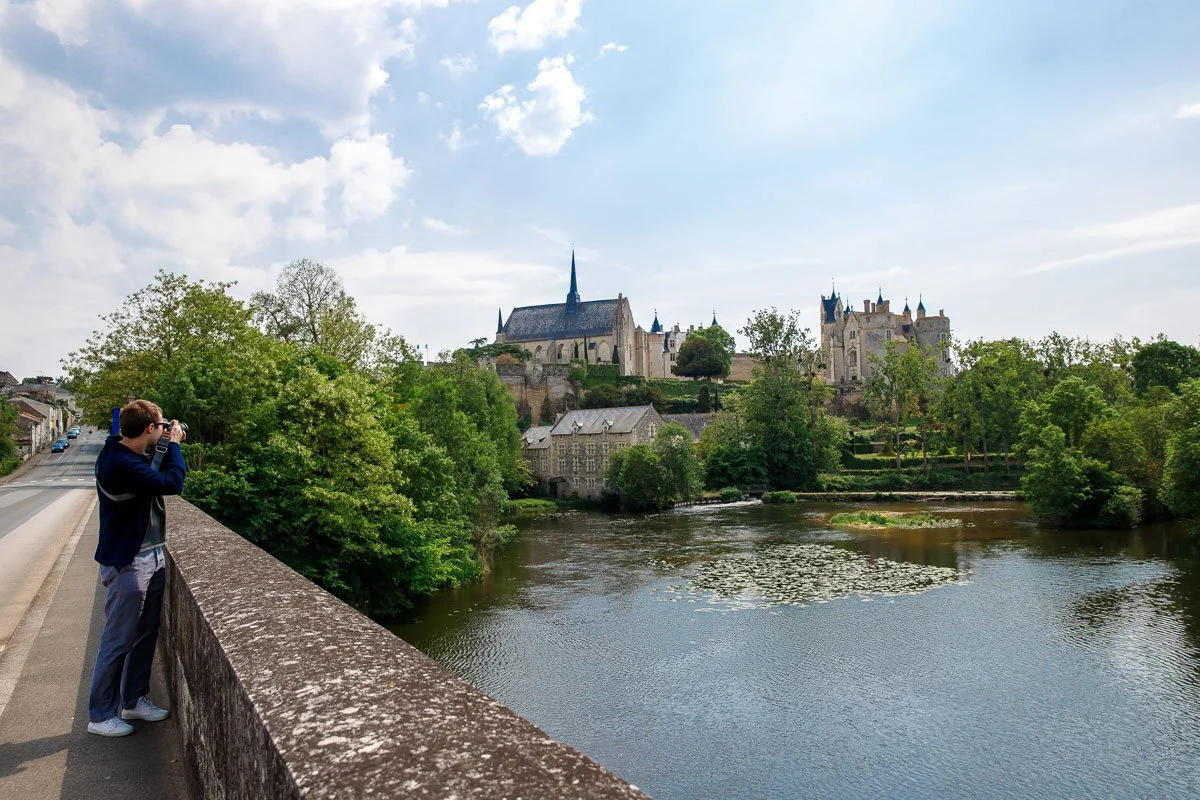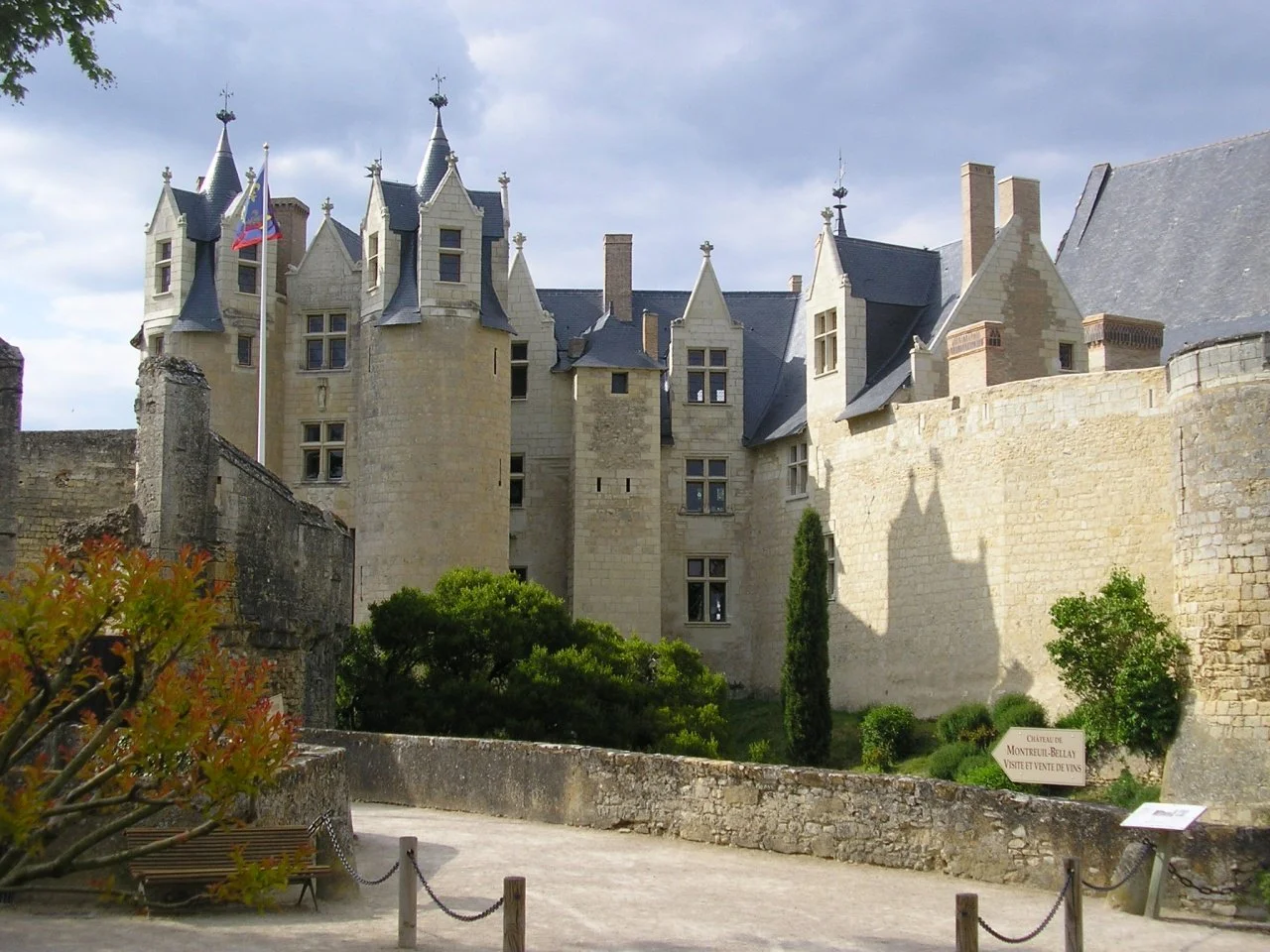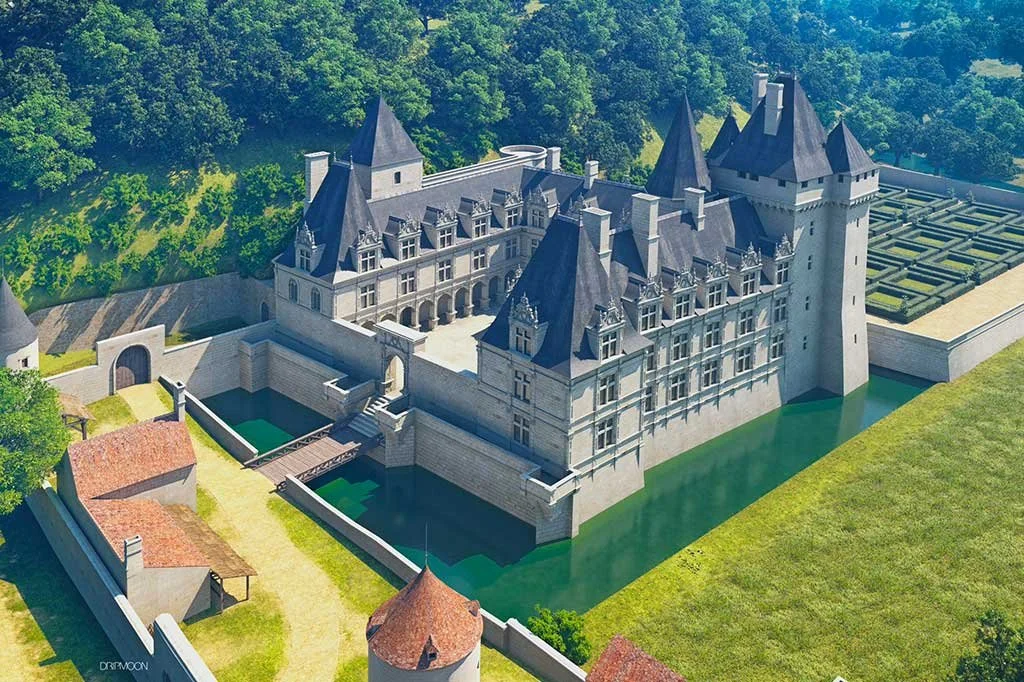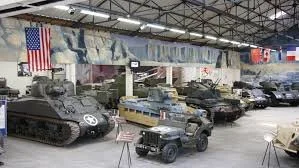The Village of Montreuil-Bellay
Montreuil-Bellay, encompassing eight villages, holds traces of ancient history, with megaliths and ruins marking early settlement. By the 11th century, it became a feudal stronghold at the crossroads of Anjou, Touraine, and Poitou. Foulque Nerra established a keep overlooking the Thouet River, later entrusted to his vassal, Giraud Berlay, whose name inspired the town’s title. The Berlay dynasty's rebellious streak led to their fortress being dismantled by Plantagenêt rulers.
The first urban center grew near the keep, marked by the Saint-Pierre church and a priory with Romanesque sculptures. In the 13th century, the viscounts of Melun fortified Montreuil-Bellay, and their defenses remain visible today. During the Hundred Years’ War, the Harcourt family enhanced the town’s architecture, building fortified gates, mansions, and expanding their residence. The 15th century became the town’s golden age.
Montreuil-Bellay thrived as a commercial hub, trading goods along the Thouet, earning the title "Grenier of Anjou." By the 19th century, railways replaced river navigation, and the town expanded beyond its medieval walls. During WWII, Méron hosted an internment camp for Romani people, now commemorated as a Historic Monument. Montreuil-Bellay endures as a blend of history, resilience, and architectural beauty.
Points of Interest
The Loire Valley teems with Medieval monuments and magnificent castles, including the 12th century Chateau Montreuil-Bellay Castle, the 18th century Chenonceau Castle, and the Castle of Villandry with its breathtaking gardens. Some are five minutes away, many are within an hour’s drive and most are within bicycle range. Combine a castle tour with lively local activities, including a hot air balloon ride in Brissac, canoeing downstream through town, horseback riding, and golfing. Or, enjoy tastings at local wineries, or meandering through open air and flea markets (brocantes, vide-greniers). Many great restaurants lie within walking distance. Below, find a few of the more popular destinations. Let us know what interests you and we will provide recommendations, brochures, and directions.
Chateau Montreuil-Bellay
Chateau Montreuil-Bellay is a castle constructed at the start of the 11th century as a defensive structure on the site of an ancient Roman village. It was built with substantial walls and tours that still surround the castle today. The castle played a key role in many of the battles with the English during the 12th century. It continued to be developed during the 13th, 14th, and 15th centuries and contains elements of various architectural styles including earlier remnants of the original. The castle has been occupied for much of its life which prevented the ruination that affected many castles in France. During the French Revolution, it was taken over and used as a prison before returning to private ownership in the early 19th century. The castle is well known for the wine produced on the grounds and sold under the same name, Chateau de Montreuil-Bellay. For more information visit the official website.
Chateau de Chenonceau
Chateau de Chenonceau is one of the best-known and most-visited castles in France. Built on the river Cher, whose calm waters reflect the castle’s spires, Chenonceau, with its remarkable architecture and interior collections, claims the honor of being one of France’s most romantic castles. Built on an old mill site on the Cher River in the Loire Valley, the first-generation castle was first mentioned in writing in the 11th century. Known as the château de femmes due to its early population of many female inhabitants (read about the six women of the castle here), the chateau is a mixture of late Gothic and Renaissance styles and is surrounded by a formal garden and park. Visit the official website for information on tours and events.
Chateau Villandry
This 12th-century castle is best known for the momentous meeting of Richard the Lionheart and Philip II of France in a historic “peace summit.” The original castle is now almost completely obscured by “newer” 16th-century construction built for Jean le Breton. The tower is the only remnant of the original building. The current castle was built for style and luxury rather than for its original defensive purpose. The world-renowned gardens are a result of extensive renovations by Dr. Joachim Carvallo after he bought it in 1906. Then, the chateau was in near ruins and set to be demolished. Now it boasts elaborate jardins français created to resemble a French chateau garden during the Renaissance. See the official website for more information.
Fontevraud Abbey
Fontevraud Abbey was first established in 1099 and is one of the largest monastic complexes in Europe. Constructed between the 12th and 20th centuries, the highlight of the complex is the large domed abbey church where Henry II, Eleanor of Aquitaine, and Richard the Lionheart are buried. Just before the French Revolution, Fontevraud was the most powerful abbey in France. It was transformed into a prison in 1804, remained one until its closure in 1963, and is today designated as a French national monument. The abbey now hosts a wide range of cultural activities and exhibitions and is a center for medieval archaeology. See the official website for information on tours and events.
Musée des Blindés (Tank Museum)
Located in Saumur, a 15-minute drive from Dovalle, this museum houses the largest and most unique collection of armored fighting vehicles in the world. Nearly 200 vehicles preside, with many being fully functional and often used to perform in the annual cavalry show. This impressive array of French, British, German, US, Soviet, and Iraqi war toys includes Panzers, Tigers, Panthers, Pershings, Leopards, and Pattons. The town of Saumur has been the traditional training center of the French Cavalry, thus the museum’s origins and its continued role as a State institution run by the Army. Visit the museum's website for more information. See this website for an English review of the museum with several pictures. While in Saumur you can visit the separate cavalry museum.
Zoo de Doué la Fontaine
The Zoo of Doue-la-Fontaine is the only zoo in Europe that welcomes endangered species, currently numbering 70 and including giraffes, rhinoceros, penguins, tigers, red pandas, and vultures. The zoo encourages species reproduction by recreating each one’s natural habitat, rich with exotic vegetation. Don't miss caressing a giraffe! Followed by a visit to the restaurant and gift shop, or a second restaurant across the street. The zoo is located in the town of Doue-la-Fontaine, the European capital of the Rose. The zoo is closed to the public from November through January. Visit the zoo's website for more information.



